At the end of my driveway lives a wild beast:
I wouldn’t call this ornamental quince pretty, except maybe for a week or two each spring when it’s covered in coral blossoms. I’ve thought about chopping it down, but it’s big old shrubs like this that lend a sense of history to this farmstead. And I’d worked so hard two years ago to eradicate the honeysuckle vine that had overtaken the shrub. We had history.
(Above: Quince and honeysuckle in March 2009, before I bought the property.)
However, in our third spring of acquaintance, I wasn’t loving the looks of this monster and felt some pruning was in order. I wanted to thin out some of the older canes that had been flattened by the snow two years ago and yet still maintain the structure of the shrub and the height that conveyed its age.
Armed with a great article in the latest Fine Gardening (How to Prune the Unprunables, by Paul Cappiello), I unholstered my pruners and prepared to do battle.
And what a battle it was! This shrub is more than six feet tall, and dense with individual canes bearing inch-long spikes. If I ever need to guard a castle from marauding heathens, I’ll do it with quince beneath the windows. They’d beat a moat any day.
I had to basically climb into this medieval torture device to make some of my pruning cuts, and soon I was scratched and bleeding up to my elbows.
I had to lie down on the front porch to recover.
But eventually I thinned the shrub out by about half. It looks a lot more airy, and I am sure the postman will appreciate not having to scrape his truck against the bush each time he delivers the mail.
During cleanup I sure was missing the green tractor, which is on a winter rest cure at my father’s farm, where it’s receiving spa treatments and being coddled under roof out of the weather.
For a week after this job, broken-off thorn tips festered out of my thighs where they’d punctured through my jeans. But I have huge bunches of blooming quince branches in my house, and they sure are pretty!
But riddle me this: The blossoms that are opening inside are very pale pink or white, quite unlike the blossoms that opened dark pink outside. Does anyone know why this is?

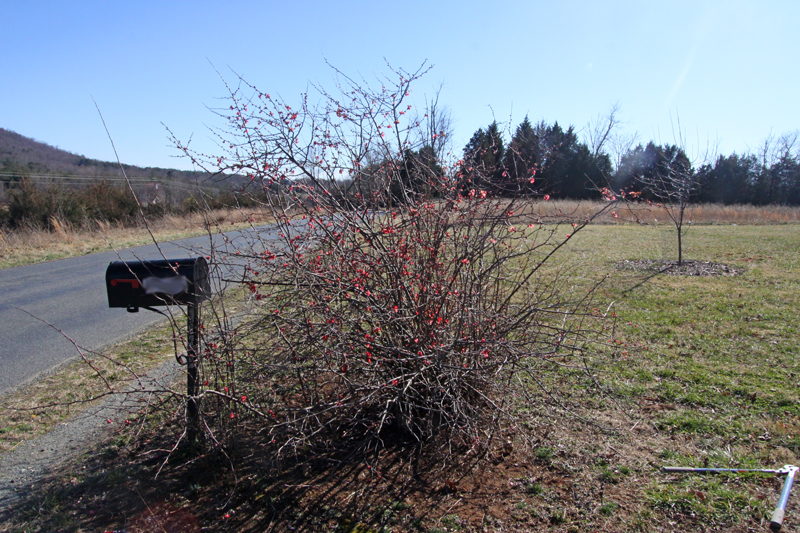

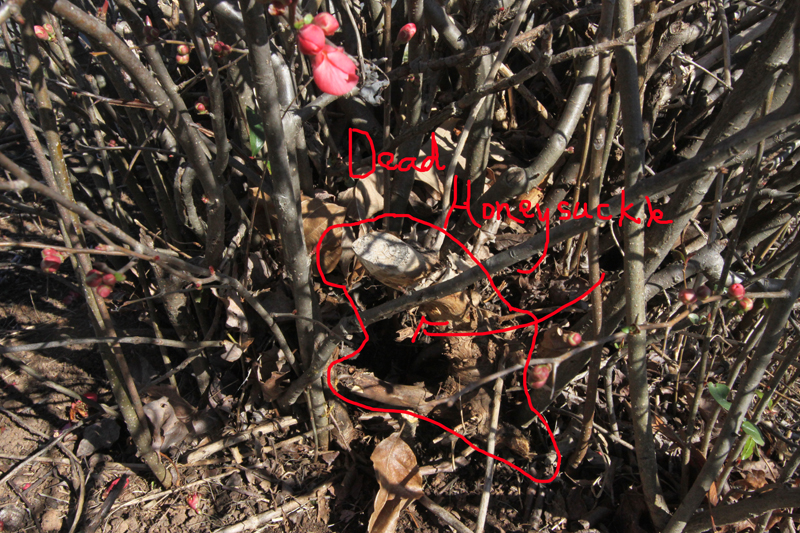
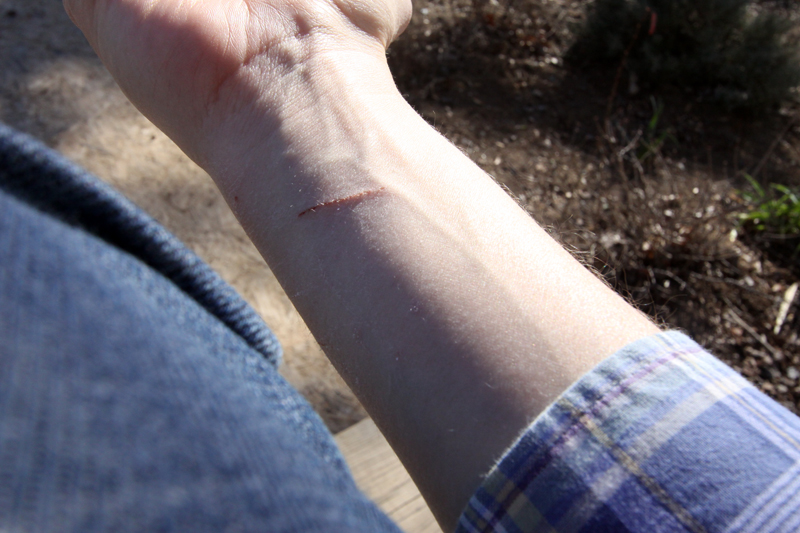

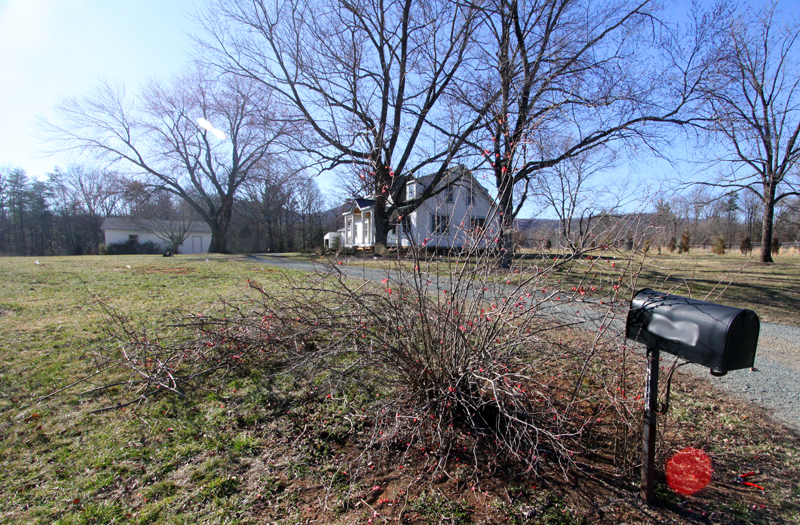
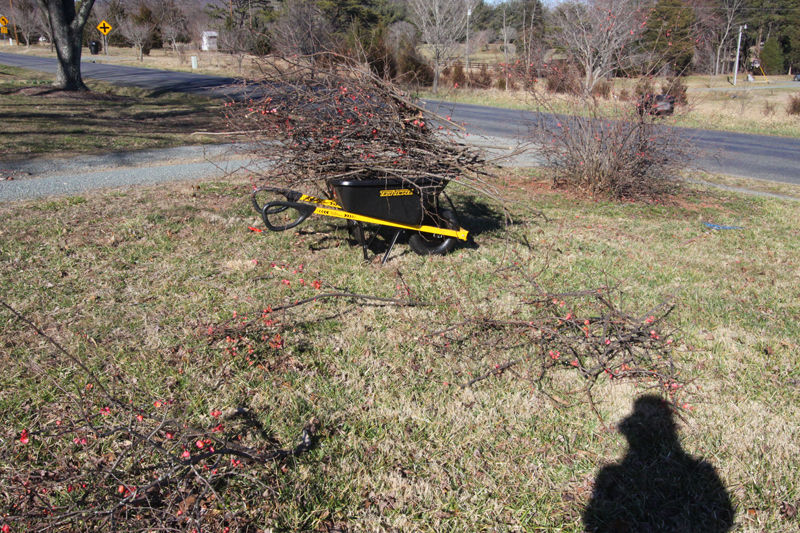
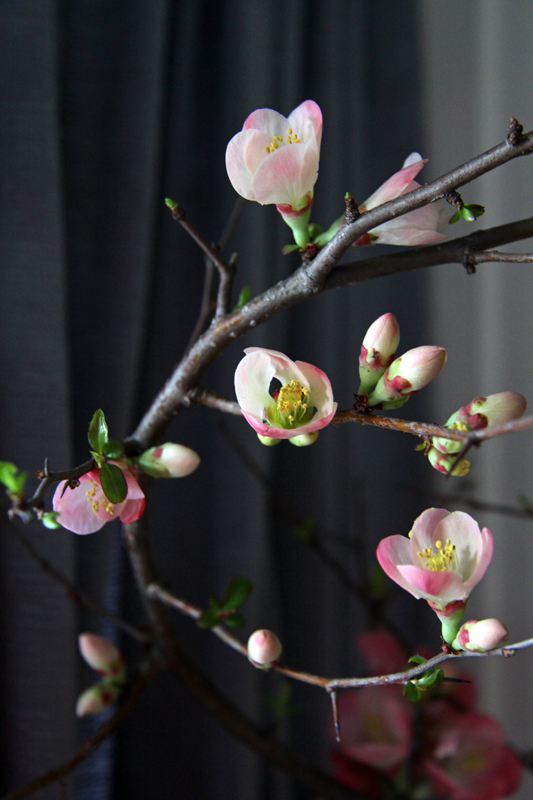
This could be a hybrid whose rootstock provides the pink flowers your used to, whereas the branches, if rooted, would produce their original stock’s color.
Or I don’t know what I’m talking about…;-)